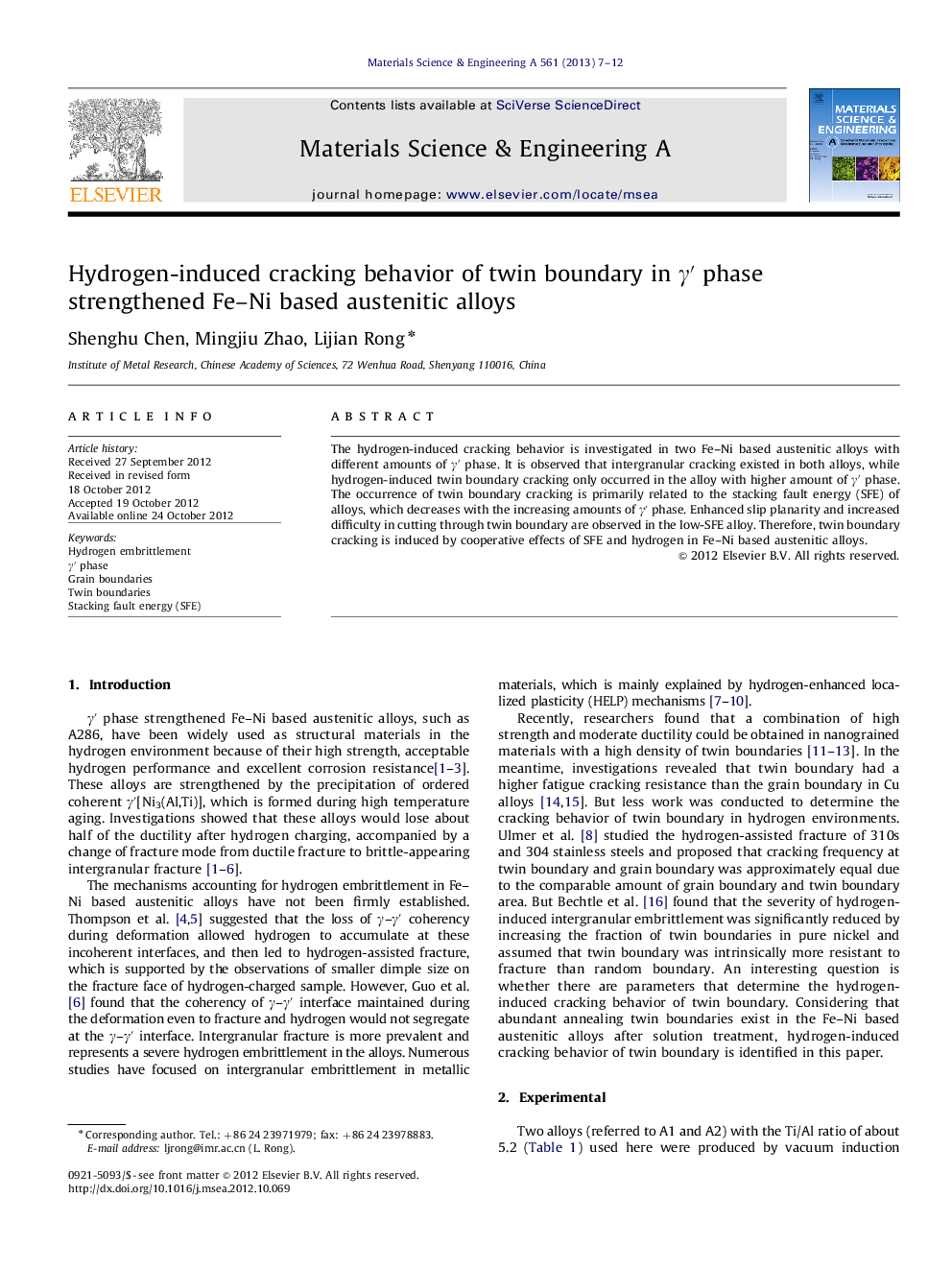| Article ID | Journal | Published Year | Pages | File Type |
|---|---|---|---|---|
| 1576453 | Materials Science and Engineering: A | 2013 | 6 Pages |
Abstract
The hydrogen-induced cracking behavior is investigated in two Fe-Ni based austenitic alloys with different amounts of γⲠphase. It is observed that intergranular cracking existed in both alloys, while hydrogen-induced twin boundary cracking only occurred in the alloy with higher amount of γⲠphase. The occurrence of twin boundary cracking is primarily related to the stacking fault energy (SFE) of alloys, which decreases with the increasing amounts of γⲠphase. Enhanced slip planarity and increased difficulty in cutting through twin boundary are observed in the low-SFE alloy. Therefore, twin boundary cracking is induced by cooperative effects of SFE and hydrogen in Fe-Ni based austenitic alloys.
Related Topics
Physical Sciences and Engineering
Materials Science
Materials Science (General)
Authors
Shenghu Chen, Mingjiu Zhao, Lijian Rong,
